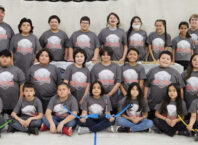By Lee Egerstrom
Caring for an elderly or other person in a long-term care facility has just gotten easier for families and friends who can now be declared “essential” caregivers.
Governor Walz and the Minnesota Department of Health (MDH) issued new guidance on July 10 to allow essential people to enter nursing homes, assisted living facilities and similar housing arrangements where mostly elderly but others with special needs reside.
The new state order will not cause a stampede of people entering these homes and bringing the COVID-19 virus with them. The long-term care facilities have until July 25 to develop plans for opening doors to people who take care of personal needs of patients and elderly residents.
This could have a significant impact on elderly Native Americans in Minnesota and their caregiving loved ones. While actual numbers are not known, among the long-term care facilities used by Natives are Housing With Services (HWS) residences where an elderly or person with special needs is housed with a home care provider. This is especially so for elderly Natives either living in an urban or rural area away from family members.
“People designated as essential caregivers will have expanded access to help ensure that the residents’ full range of emotional, social and physical needs are met,” the health department said in releasing the new guidance, Essential Caregiver Guidance for Long-term Care Facilities.
Technology can lessen loneliness for some residents, MDH said, although it isn’t a sustainable substitute for in-person contact. “This is especially true for residents with cognitive impairments, visual and/or hearing difficulties, and mobility limitations as they struggle to maintain connections with loved one.”
An essential caregiver (EC) could be someone who previously assisted the resident or is committed to providing companionship and assistance with daily living, the guidelines said. It is often a family member.
Long-term Care Facilities aren’t required to implement an essential caregiver program. MDH, however, encourages it and the guidance gives recommendations on how to do it.
Among perceived benefits is that an EC can advocate for the resident, observe and communicate important details and changes in the resident’s condition or behavior, help the resident manage critical information, provide emotional support and help honor the resident’s values and preferences of care, alleviate tasks for staff and providers, and preserve and promote quality of life.
Facilities would also benefit from having an essential caregiver plan in place.
Knowing the designated EC would help establish times for visits, to implement safety and sanitation protocols, and give staff a knowledgeable family or friend point person to discuss emotional needs and cares.
Minnesota emergency health measures closed those doors to outsiders in mid-March. Long-term Care facilities house the most vulnerable to the virus and became the original hot spots for the coronavirus at the beginning of the pandemic. About three out of four Minnesotans who had died from COVID-19 were residents in Long-term Care housing.
The MDH’s Essential Caregiver Guidance for Long-term Care Facilities information can be found at https://www.health.state.mn.us/diseases/coronavirus/hcp/ltccaregiver.pdf.
The Alzheimer’s Association has helpful information for caregivers, Coronavirus (COVID-19): Tips for Dementia Caregivers in Long-Term or Community-Based Settings. It is available at https://www.alz.org/professionals/professional-providers/coronavirus-covid-19-tips-for-dementia-caregivers.







